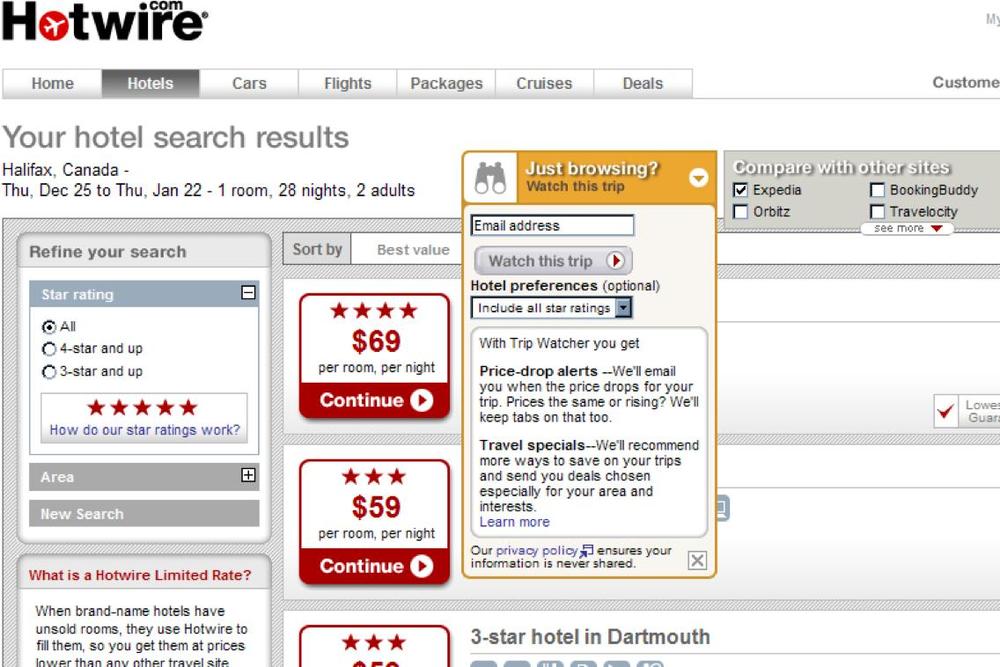So far, we’ve looked at how to link what visitors did on your site with the goals you’re hoping they’ll accomplish. We’ve seen how to segment visits so you can understand what’s working and what isn’t, and how to experiment iteratively in order to optimize the effectiveness of your website.
But no amount of optimization will save you if you don’t understand what visitors wanted to accomplish in the first place.
Understanding your market’s real motivations is difficult at best. According to Lou Carbone of Experience Engineering, Inc., 95 percent of people’s motivations are subconscious (www.smeal.psu.edu/isbm/documents/0206msum.pdf). People seldom say what they mean. Sometimes they’re trying to conform to the interviewer’s expectations. Sometimes they want to hide socially unacceptable biases—racism, ethical beliefs, and so on—that nevertheless affect how they behave (the Bradley effect is one example of respondents giving more socially acceptable responses that differed from their actual behavior: http://en.wikipedia.org/wiki/Bradley_effect).
Often, people simply don’t know why they do what they do. Their unconscious mind has decided how to act long before their conscious mind knows about it, leaving people to rationalize their behavior after the fact (www.mpg.de/english/illustrationsDocumentation/documentation/pressReleases/2008/pressRelease20080414/index.html).
That’s a frightening prospect, particularly for analytically minded web operators who just want to crunch numbers and measure impacts. Companies invest heavily in consumer research and focus groups. Using eye tracking, recording, surveys, and interviews, they try to get an idea of what’s inside their customers’ minds. Despite all this, delving into visitor motivations is at best a soft science.
The best way we have to discover our visitors’ intentions and concerns is to ask them. Online, we use Voice of the Customer (VOC) technologies. VOC collects customer feedback for analysis and review. Though it affords us only a glimpse of what’s on our visitors’ minds, that glimpse can be invaluable.
In the early days of e-commerce, the best businesses were the ones that had a tremendous amount of information to search and sold big-ticket items: real estate, used cars, and travel. In each of these, the Web fundamentally changed an entrenched sales model where the realtor, salesperson, or agent knew more about the market than the buyer did. Once individual consumers could learn as much about the neighborhood as the realtor, the premium that realtor could charge diminished. Consumers booked their trips online and searched for used cars on eBay.
There’s one thing websites can’t do as well as humans, though: understand what people are thinking.
Consider, for example, the large travel sites. Companies like Expedia, Travelocity, and Priceline once faced a huge problem with abandonment. Visitors would search for a hotel, find one they liked, check rates and availability—and then leave. This high abandonment rate frustrated all attempts to fix it. The sites tried offering discounts, changing layouts, modifying the text, and more. Nothing would stop potential buyers from abandoning their bookings.
Then one of the sites decided to survey its visitors with open-ended questions like, “Why did you come to the site?” The site’s operators quickly discovered that many visitors weren’t planning on booking a room at that time; instead, they were simply checking availability. And when they did want to book, they were comparing brands for those that matched their hotel loyalty programs.
In other words, the reason they thought visitors were coming to their sites—to book hotel rooms—was often wrong. Instead, visitors were checking whether rooms were free below a certain rate, or trying to find a deal on their favorite hotel chains. Both behaviors were bad for the sites’ businesses, since they reduced conversion and undermined the free market on which the discount travel sites relied. The site’s operators had a different set of goals in mind than visitors did, and the symptom of this disconnect was the late abandonment.
With this newfound understanding of visitor motivations, travel sites took two important steps. First, they changed the pages of their sites, offering to watch particular searches for the customers and tell them when a deal came along, as shown in Figure 7-1.
Second, they moved the purchasing or bidding to the front of the process, forcing the buyers to commit to payment or to name a price before they found out which hotel they’d booked. This prevented window-shopping for a brand, while allowing the site operators to charge discounted rates.
The results were tremendous, and changed how online hotel bookings work. Today, most travel sites let users watch specific bookings, and many offer deeper discounts than the hotel chains themselves as long as customers are willing to commit to a purchase before finding out the brand of the hotel.

